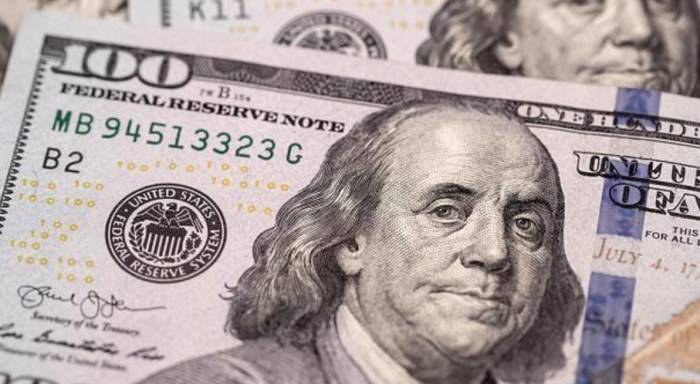Introduction
In the fast-evolving landscape of global finance, a significant narrative centered around the expectations for interest rate cuts by the Federal Reserve is quietly unfolding. This development is profound, its ramifications reaching far and wide, sending ripples through the pulse of every economy. Unlike past military conflicts or geopolitical strife, this modern-day battle—one fought without weapons—fundamentally reshapes the economic map of the world in a more subtle, yet profound manner. Today, let's uncover the layers behind these interest rate cut expectations, exploring how they stir the global economic chessboard and the profound implications these decisions have on the lives of ordinary citizens.
The Main Body
Expectations for Rate Cuts: The Financial Market's Barometer
Whenever discussions about changes in the Federal Reserve's monetary policy emerge, the global financial markets respond as if jolted with adrenaline. Whether it’s the stock market, bond market, or precious metals sector, fluctuations accompany this anticipation. A rate cut—while seemingly a straightforward monetary policy tool—carries with it substantial economic inertia. It reduces borrowing costs for individuals and businesses alike, stimulates both investment and consumption, and can influence international trade dynamics through shifts in currency value. Thus, when whispers arise suggesting the Federal Reserve might implement a 50-basis point rate cut, the collective nerves of global investors tighten instantaneously, resulting in soaring gold prices and plunging dollar indices, setting off a cascade of reactions across markets.
Advertisement
The Surge of Gold: A Market Frenzy Amidst Fear
Gold, a traditional safe-haven asset, naturally attracts investors under anticipated rate cuts. The spike in gold prices is more than just a reaction to economic uncertainty; it signals a preemptive positioning by the market against projected inflationary trends. Historically, in periods of heightened economic pressures or when monetary policies turn accommodative, gold illuminates its distinct allure, drawing significant capital flows. This market exuberance hides profound investor anxieties concerning future economic trajectories.
The Delicate Balance of Stock Markets and Economic Sentiment
In stark contrast to the exuberance observed in gold markets, stock market reactions display a nuanced complexity. On one hand, the influx of liquidity brought on by potential rate cuts generates upward momentum for stock prices; conversely, the prevailing fears of a global economic slowdown render investors wary. The uptick in the Dow, NASDAQ, and S&P 500 indices seems to reflect a cautiously optimistic view around the prospect of easing monetary policy, yet the underlying logic deserves critical analysis. Can a rate cut genuinely stimulate comprehensive economic growth, or does it merely mask deeper systemic economic ailments?
Global Economic Slowdown: Can Rate Cuts Serve as a Lifeline?
Against the backdrop of a sluggish global economy, rate cuts appear to emerge as a panacea for central banks worldwide. However, the actual effectiveness of this strategy lies in a confluence of factors. While reducing interest rates can lower borrowing costs, it also risks creating asset bubbles and igniting inflationary pressures. In today’s highly interconnected world, adjustments to monetary policy within one country often trigger rippling effects, altering the economic landscape globally.
Consumer Confidence: The Touchstone of Rate Cut Policies
The uptick in the University of Michigan's Consumer Confidence Index undoubtedly serves as a tonic for the market. Yet, the data behind this trend conceals deeper uncertainties. Is the surge in consumer confidence a genuine reflection of optimistic economic projections, or merely a fleeting reaction to expected rate cuts? If these rate cuts fail to provide tangible improvements to real economic performance, the sustainability of this confidence remains questionable.

Inflation Concerns: The Double-Edged Sword of Rate Cuts
Inflation, a specter that lingers on the periphery yet constantly threatens economic stability, has reclaimed attention in market discussions. Rate cuts can invigorate economic growth, but they also risk creating excess liquidity, which can subsequently elevate price levels. Especially prevalent during a global economic slowdown, the risks associated with inflation cannot be understated. In this regard, the Federal Reserve’s deliberations surrounding potential rate cuts necessitate a careful balancing act between stimulus and caution.
Conclusion
In this global economic chess match ignited by expectations for rate cuts, each of us is a participant. As everyday citizens, we might not wield direct influence over the contours of policy, but we can proactively engage with market trends and thoughtfully analyze economic conditions to better prepare for our futures. Every decision regarding investment, consumption, or savings should be aligned with our risk tolerance and personal circumstances. Moreover, we must remain vigilant and composed, not getting swayed by the short-term fluctuations of the market, but allowing a long-term perspective to guide our views on economic trajectories.
- 2024-08-22
Leave Your Comment